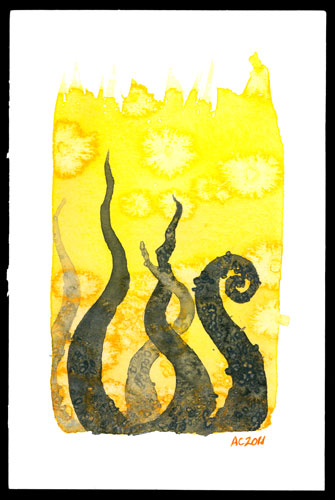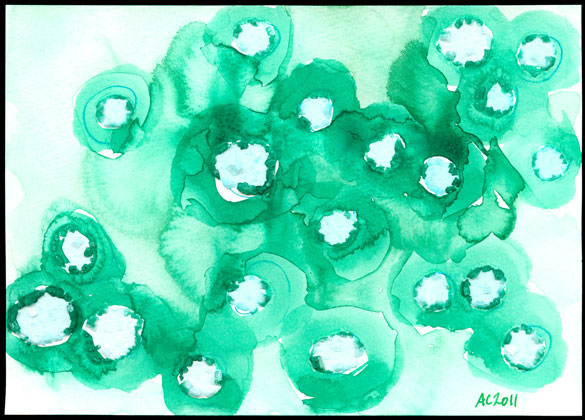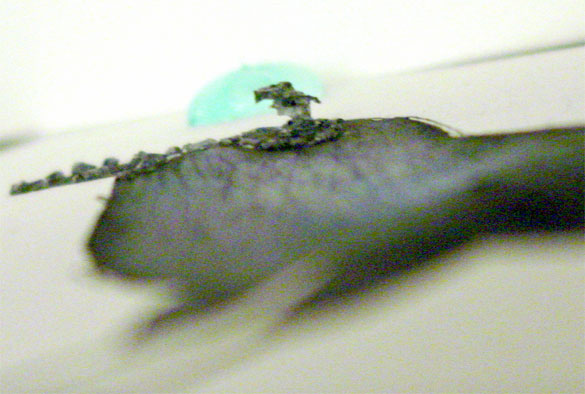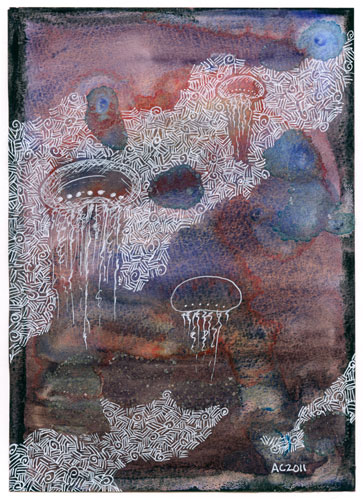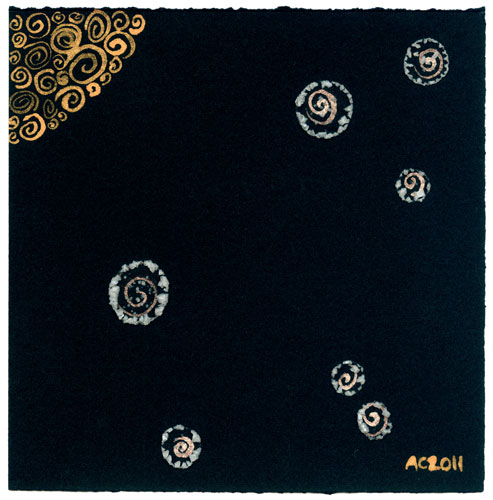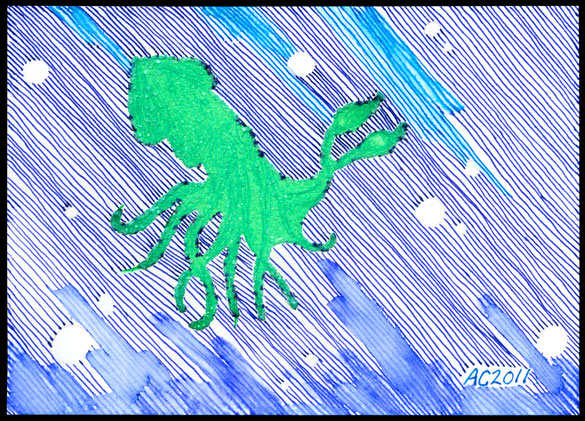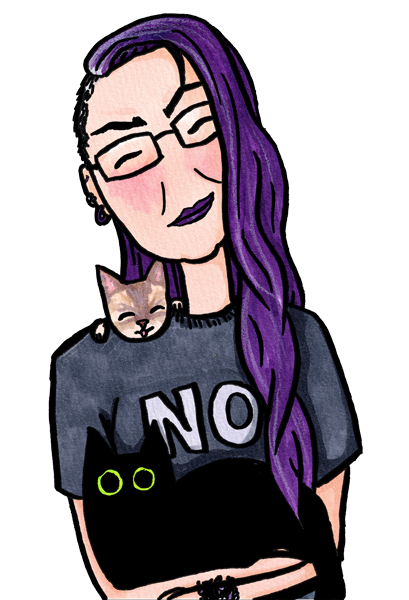Salt and Watercolor
Wednesday, March 7th, 2012
From Visual to Physical Texture
I’ve seen a lot of artists who explore the same idea over and over, and I never thought I’d find anything I was interested in enough to stick with myself. I was all over the map, artistically, doing everything from bronze sculpture to oil painting, acquiring new materials like some people buy shoes (you know who you are).
Well, I’ve proven myself wrong! As you’ve probably noticed, I’ve been using the salt-and-watercolor technique for going on a year now, and creating a body of contemporary artwork that I’m totally in love with. The ability to create beautiful art out of something as mundane as salt just amazes me.
Today’s Words post is the short version of How it Happened.*
Lots of people use salt to create texture in watercolor or silk paintings, so I decided to teach myself how. You can see a traditional use of the technique in Tentacle Deeps 9. I sprinkled salt onto the damp watercolor paint, and the salt drew the paint to it, creating the flower-like shapes in the background and the texture on the tentacles.
I experimented with just how damp the paint needed to be to get the effect I wanted. In Burning Planet, the paint was actually too wet, and the salt partially dissolved into the paint. As it dried, the salt re-crystallized with the darker red and orange pigments trapped inside — the crystals even sparkle in the sunlight. I was fascinated.
With Water Lilies 1, I continued to play around trying to make bigger crystals. The turquoise ink dilutes to a lovely pale blue which is sadly fugitive (the color fades in strong sunlight, and eventually the flowers will be totally white). This was the first time I tried the eyedropper technique I’ve been perfecting ever since, and I fell in love with the strange little pools of salt that formed. They’re a little fragile, but they add a 3D quality to the paintings that’s just plain cool.
I’m a big fan of entropy and randomness (except when it comes to housework, bleh), especially when I can control the parameters.
I always enjoy the way purple hair dye fades, first the blues and then the reds, going from deep purple to a light reddish-brown over a few months. I like board games where there’s an element of chance to throw a wrench in your strategy, like die rolls or card draws. This salt-and-watercolor technique is like that, too.
For instance, on Rain Crow I got the coolest effect where a crow-shaped tower of salt grew right up out of the crow’s eye, entirely by chance.
I’ve tried a bunch of different things with it since then.
For Salted Squid 1, I made a squid-shaped puddle of salt, ink and water, which dried as an even coat of crystals rather than in the cup shape I get from the single droplets.
Something about the paper I used for Modern Snow creates gorgeous snowflakes, an effect I haven’t been able to duplicate with any other paper.
In Jellyfish Deeps, the water refused to bead up and instead made strange-shaped, shallow pools on top of the watercolor wash.
I’ve even used a naturally black paper to create pieces like Moon Dark, which makes the salt crystals stand out pale and stark against the page.
I’ve also made a couple of bookmarks, and I used my Horizon Bookmark to read a book just to make sure it would stand up to the abuse.
My newest toys are iridescent paint and sparkly gel ink pens, and you’ll see them featured in all three of the painting posts this week (Monday, Thurs. & Fri.). I don’t know how long this “salt phase” will last, but I’m looking forward to finding out!
*If you’ve read the Star Trek book that’s a reference to, I love you, fellow nerd. Live long and prosper!
PS – If you click on the salt tag below, you can see every salt painting I’ve posted (as long as I remembered to tag it).
Find more like this:
Categories: Daily Art, Words Words Words
Tags: how it happened, salt, technique, watercolor
 Negative Space »
Negative Space »

